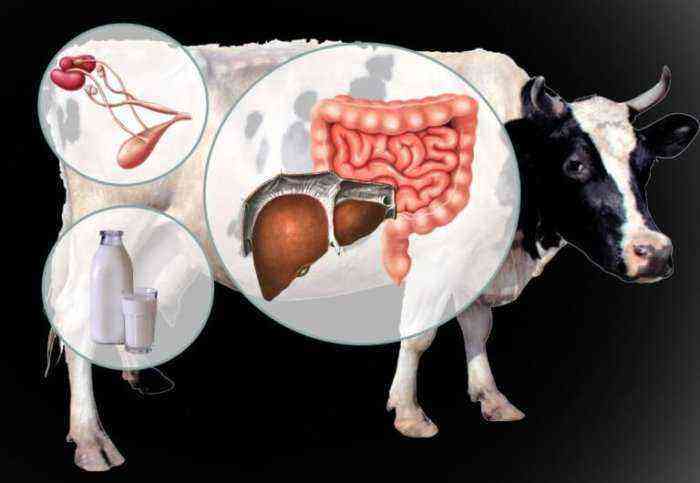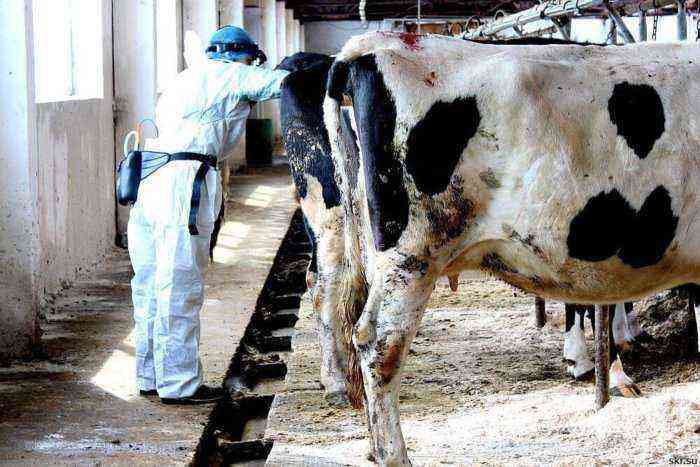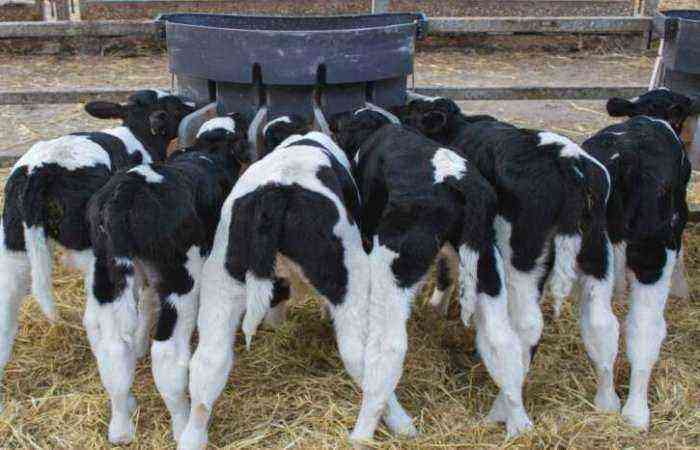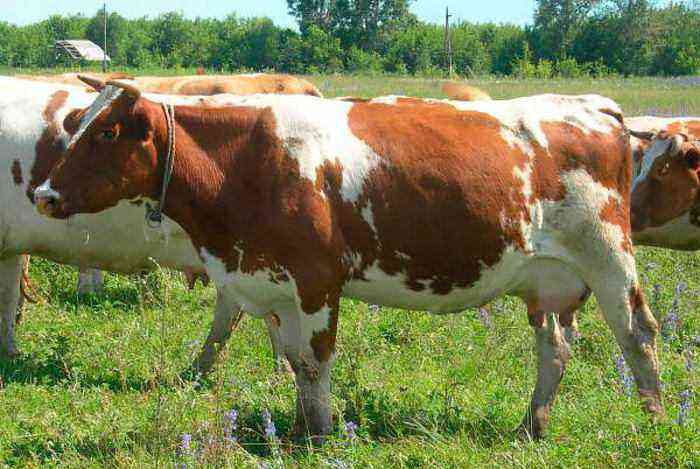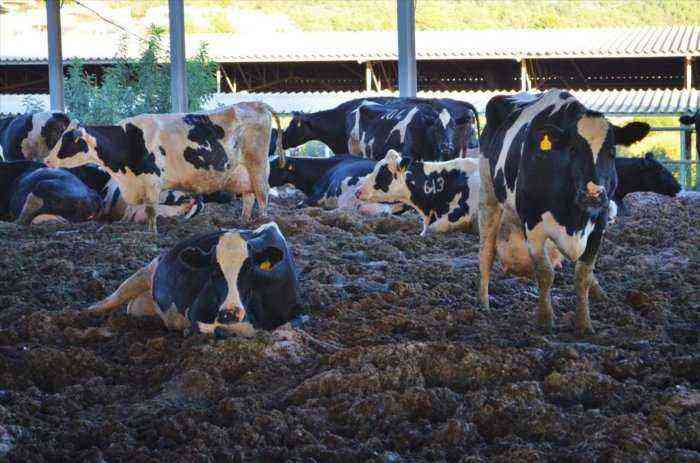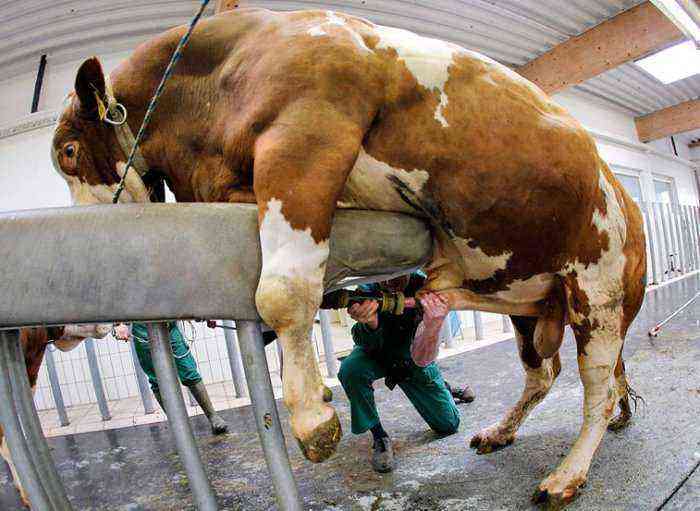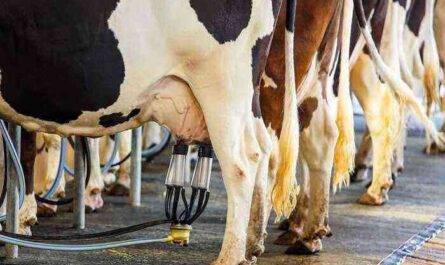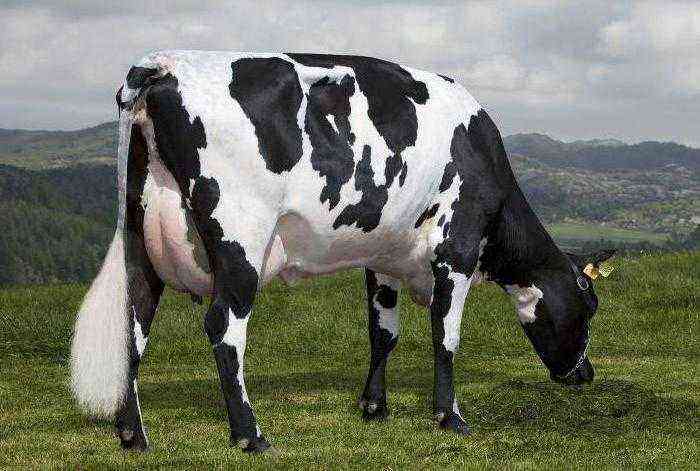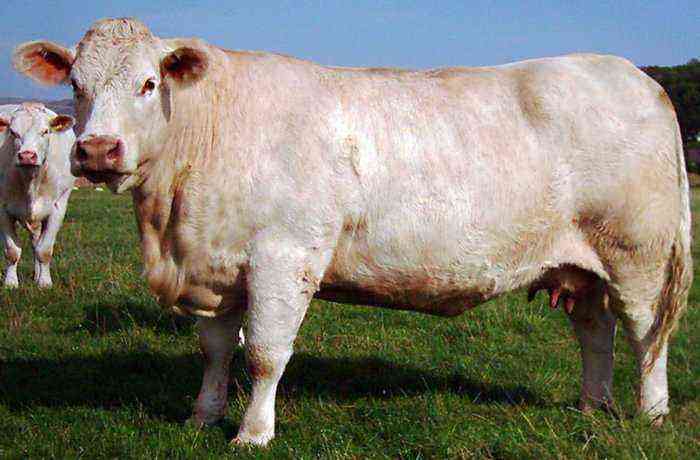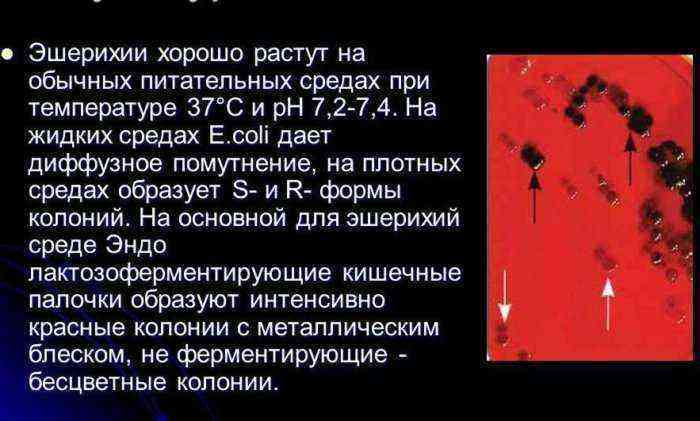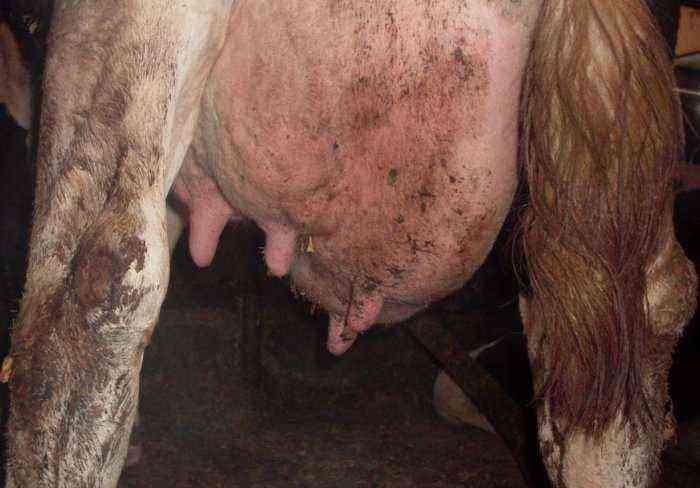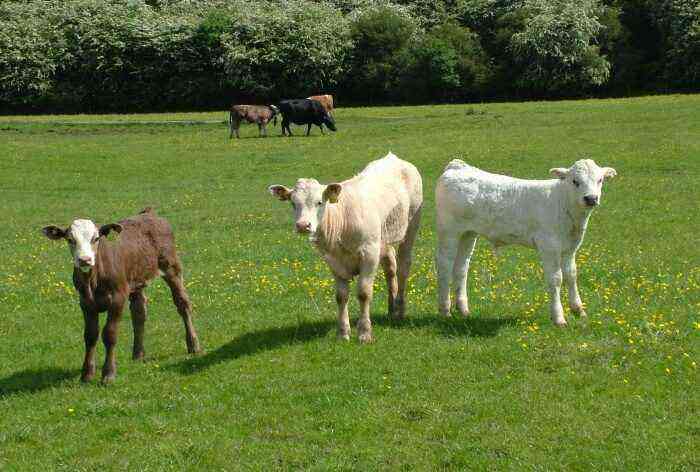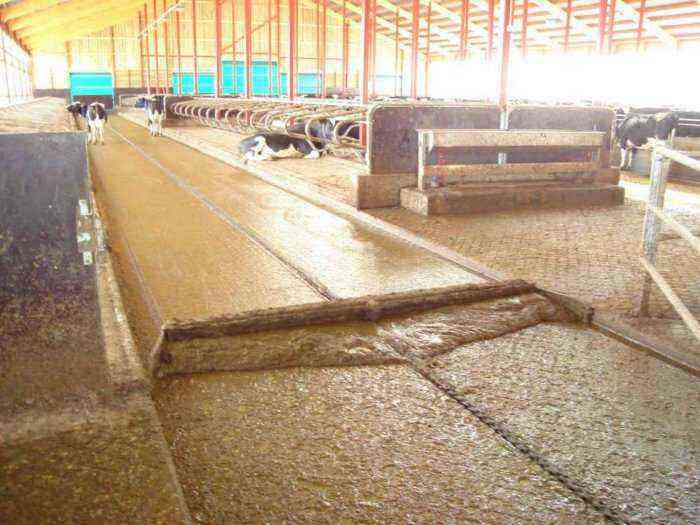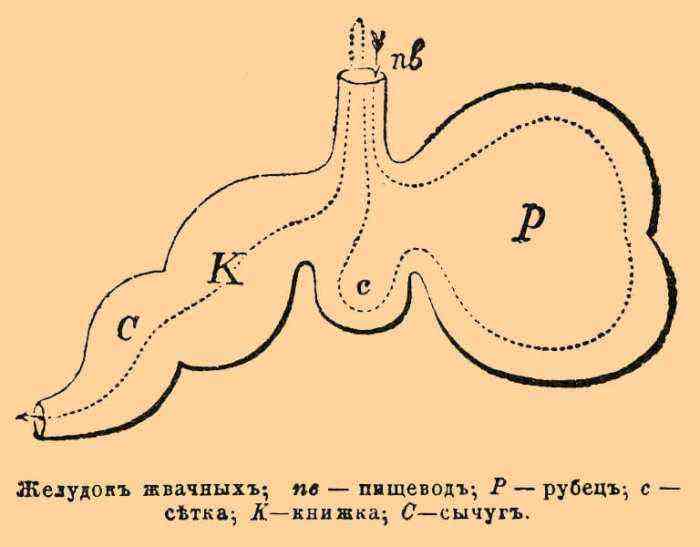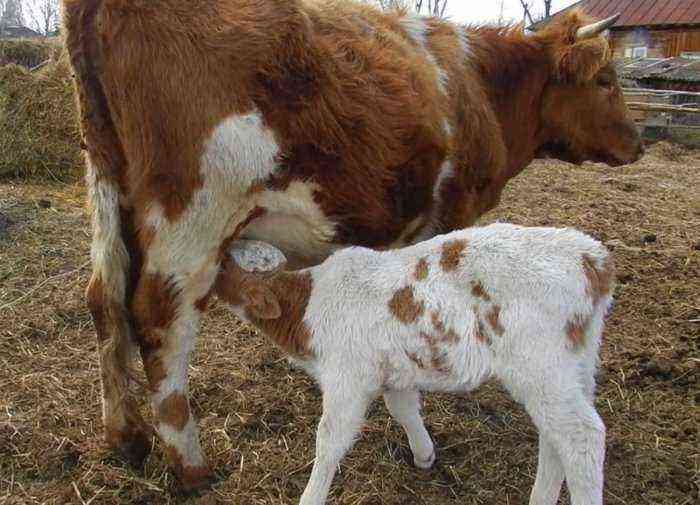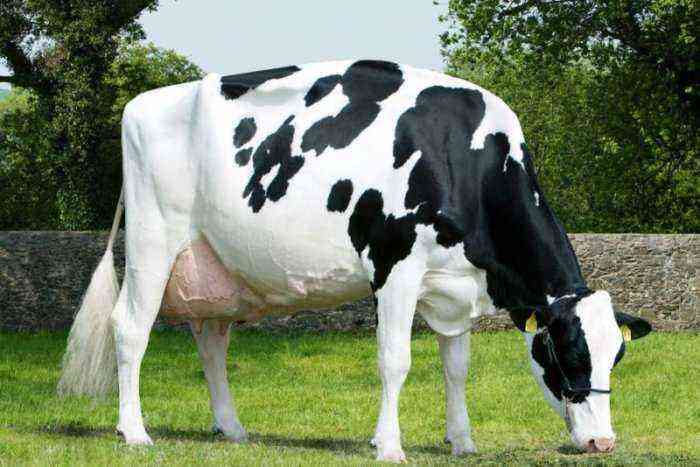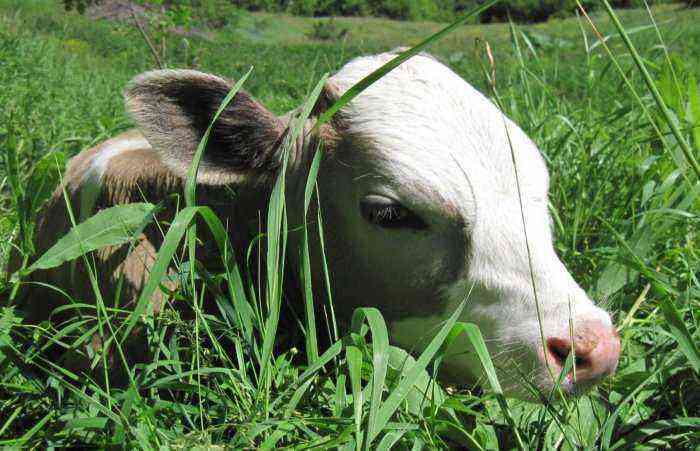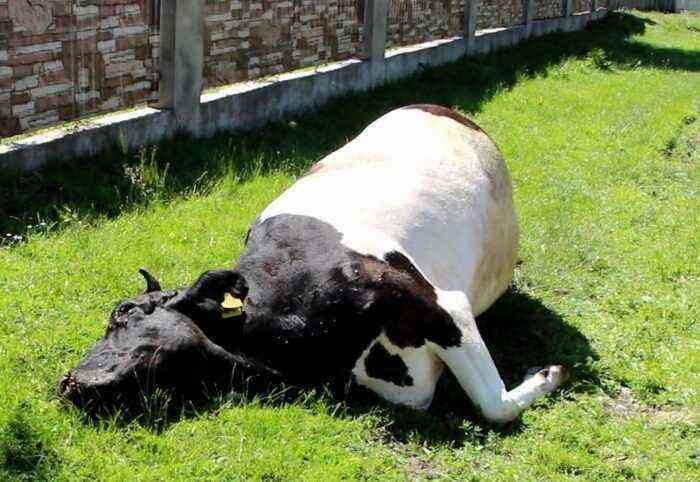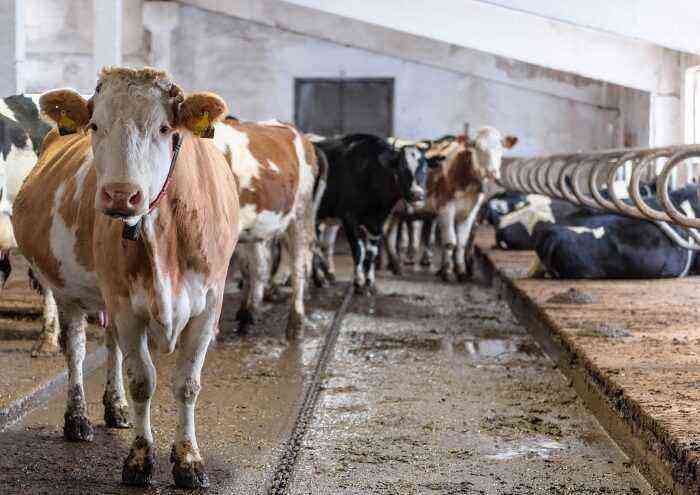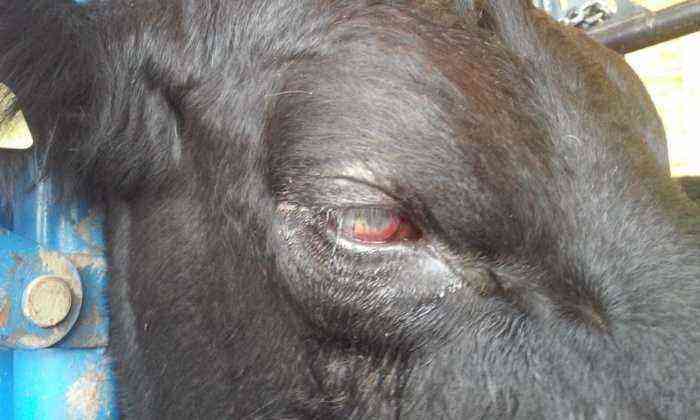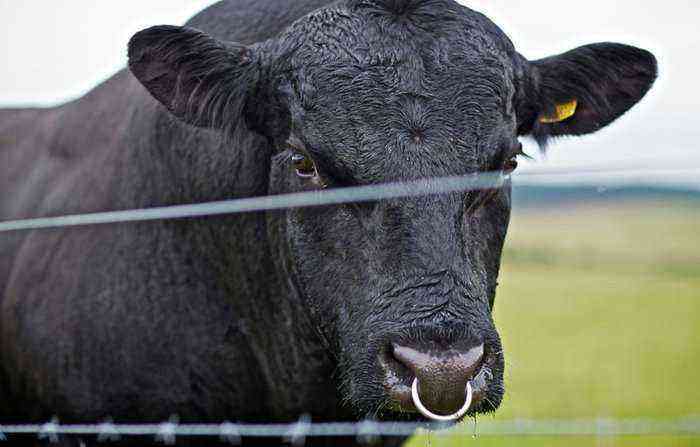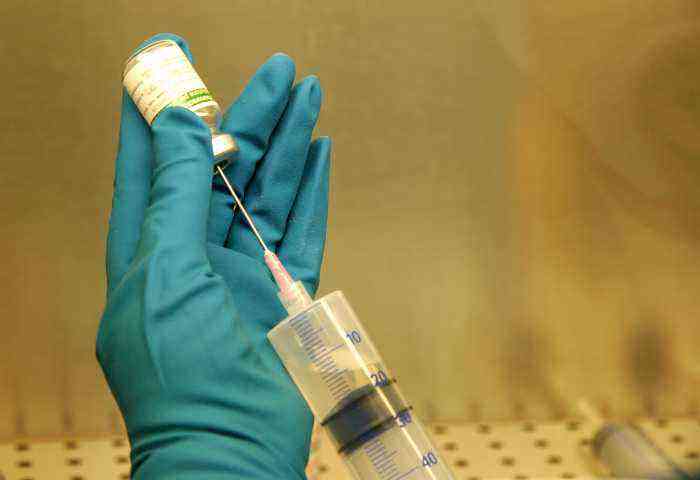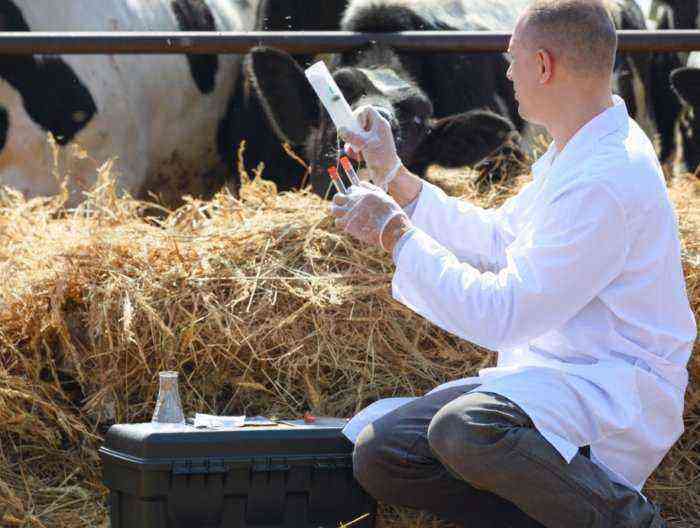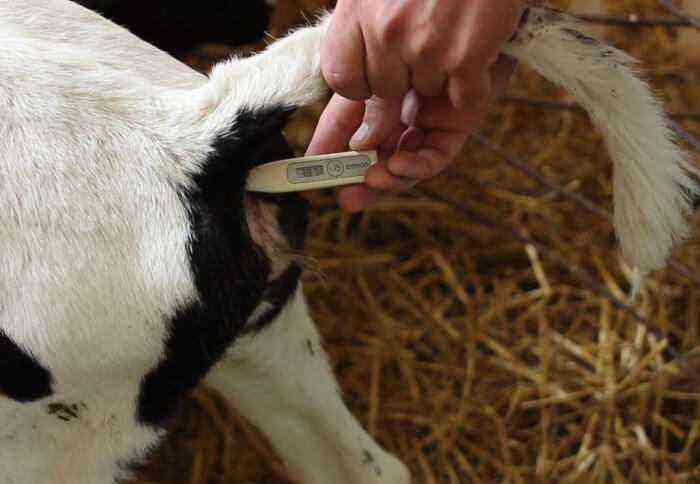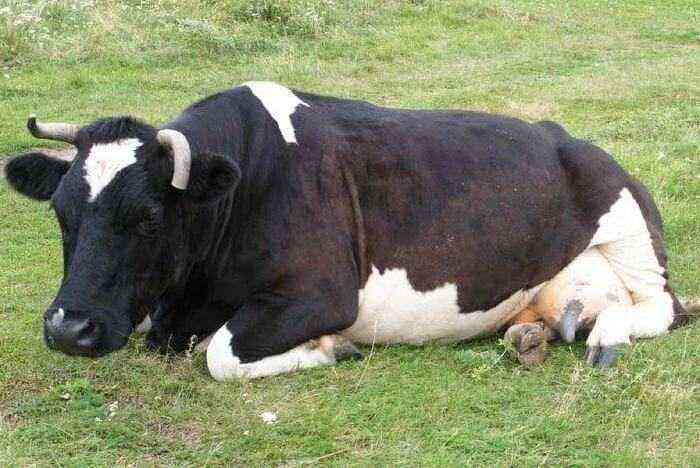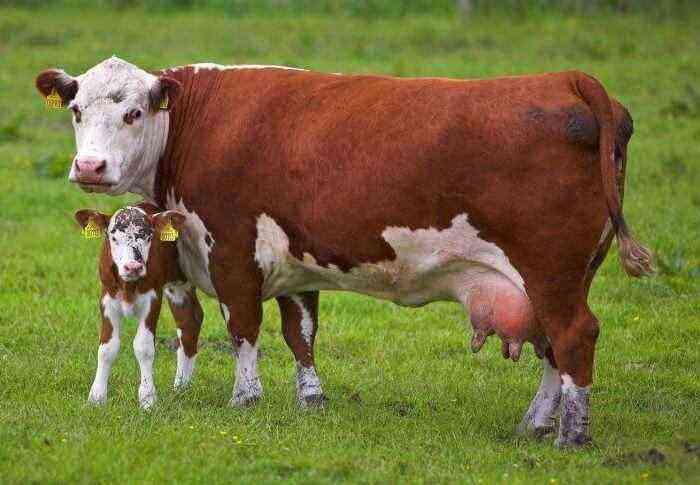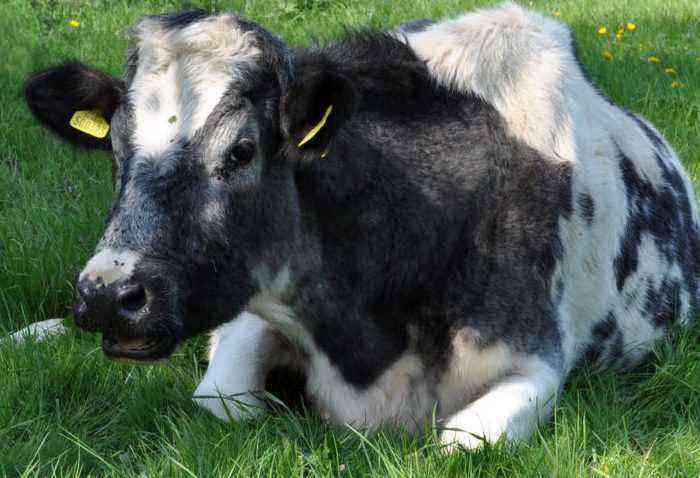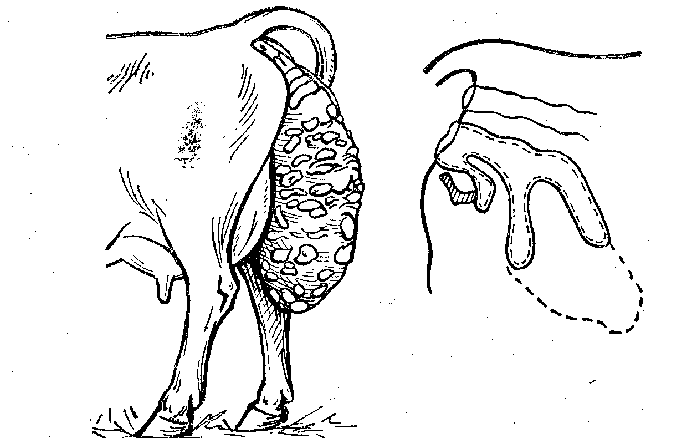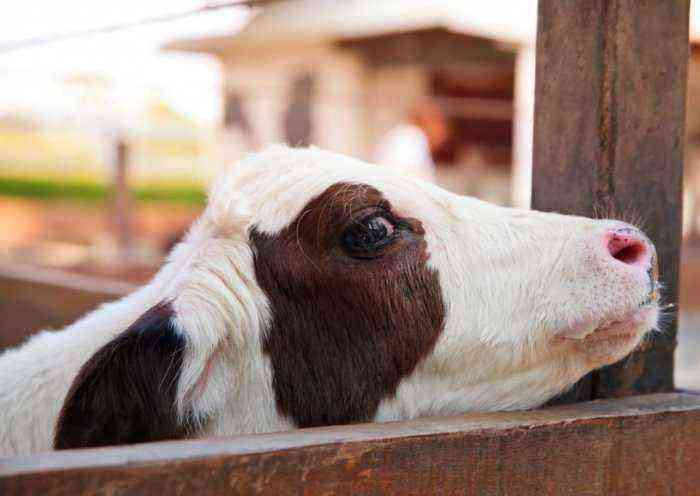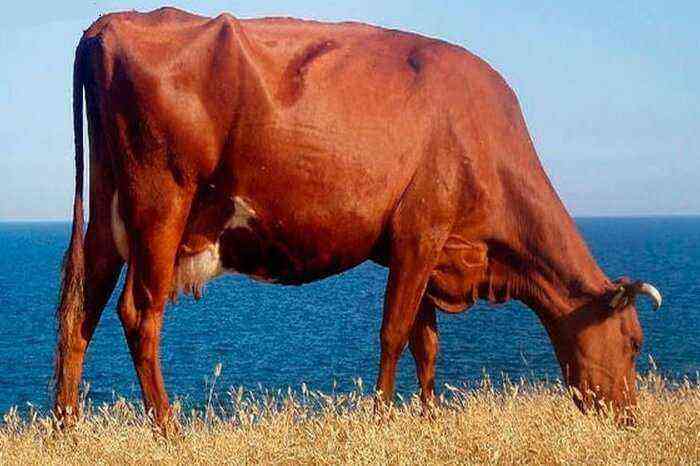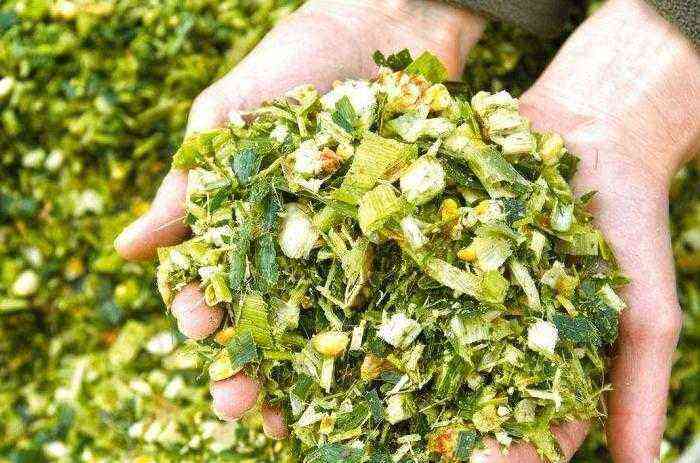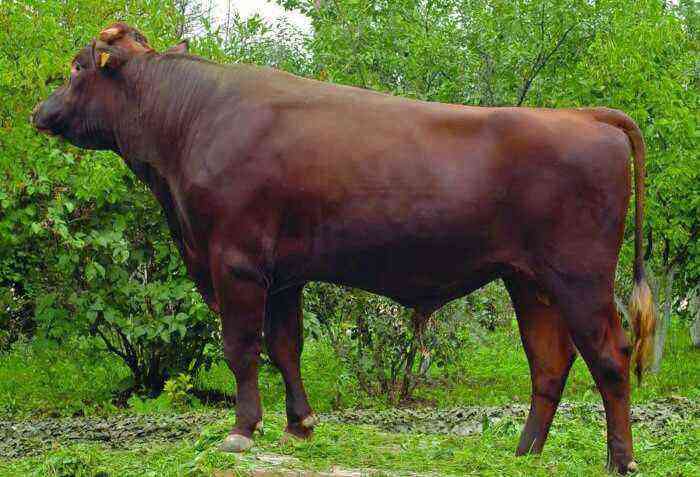Knowing how much a bull weighs is extremely helpful when buying cattle. By comparing the value of the mass of an animal with its age and breed, it is possible to timely identify sick or lagging behind in the development of living creatures and not be deceived. In addition, knowledge of the bull’s weight is also necessary when calculating the portion of feed needed to meet the physiological needs of the animal’s body. Such a calculation will allow reaching the maximum indicators of livestock productivity in the future.
Measuring the weight of cattle
Average weight of a bull and a cow
Many experienced livestock breeders in the process of growing a particular breed of cattle rely on the value of the average weight of animals. When compared with the actual weight of a bull or cow, it allows you to timely identify the developmental lag in living creatures, correctly adjust nutrition, and diagnose signs of developing diseases.
But in itself, the concept of the average weight of cattle is rather ambiguous. The exact values in this regard are influenced by:
- Animal breed.
- Floor.
- Age.
Also, certain amendments to the indicator are made by the diet of cows used in the process of growing.
In animal husbandry, all livestock is divided into four main categories:
- Choice livestock. This category includes animals weighing more than 500 kg. As a rule, these are breeds of the meat direction of productivity.
- Livestock first class. This group includes cows and bulls, the average weight of which varies between 400–500 kg.
- Second grade. This includes breeds whose representatives grow up to 380-400 kg.
- The third grade of cattle. The category includes animals weighing up to 380 kg.
In any case, the minimum mark to be guided by is a weight of 300 kg. If the animal being raised does not reach the indicated values, then you should be more careful about its health. This can be a sign of a serious illness.
But when using average weights of cattle taken from a particular breed, one must take into account the difference in the weight of a bull and a cow. In all breed lines without exception, the male weighs significantly more than the female. The average weight of an adult bull varies between 450–1000 kg. In some meat varieties, there are specimens with a weight exceeding 1,5 tons. Cows are smaller, they grow up to 300-600 kg, and only in some cases their weight reaches 700 kg.
How to determine weight without scales?
At large livestock enterprises, special equipment is used to determine the mass of livestock, but it is not rational to purchase it for a homestead because of its high cost. In this case, one of the existing methods for measuring the weight of living creatures without weights by measurements is used.
Using a table
The method of measuring the body weight of a cow or bull using a special table was invented by the scientists Strauch and Kluver. Accordingly, it is named after them.
To determine the weight, it is necessary to take two measurements of the animal:
- Oblique body length. It is determined by measuring the distance from the ischial tubercle to the shoulder joint of living creatures with a measuring tape.
- Chest girth. In this case, the tape is wrapped around the body of the bull in the chest area. Moreover, from below, the tape should pass immediately behind the front legs, and in the upper part behind the shoulder blade.
The values obtained during the measurement in centimeters are substituted in the following table:
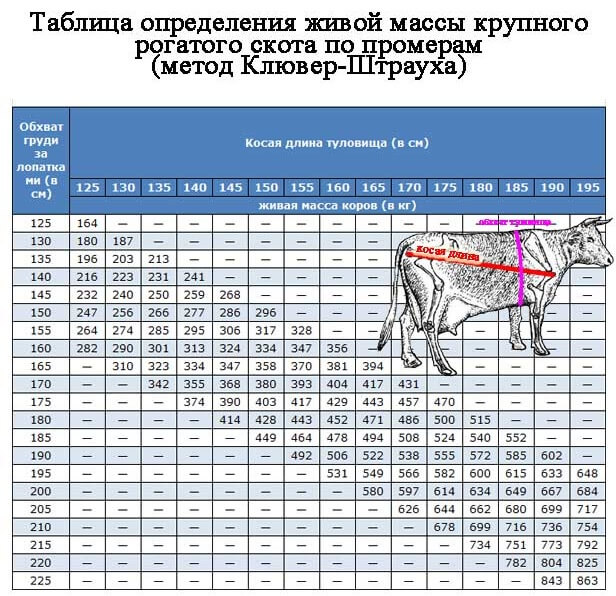
Cattle weight measurement table
The required value of the animal’s weight is located at the point of intersection of the row and column corresponding to the received figures.
Attention! This table is only suitable for measuring adult cattle. To work with young animals, Kluver and Strauch developed a separate table.
Trukhanovsky method
The second method was developed by the domestic scientist Trukhanovsky and involves the measurement of living creatures using measurements and a special formula. To implement it, it is also necessary to know the girth of the body of the bull (A), but as a second measurement, they use not an oblique, but the usual length of the body of the animal (B). To do this, a rigid ruler is placed on the ridge of the living creature and the distance from the tubercles on the sacrum to the shoulder joint is measured.
The formula itself assumes the following form:
M=K*((A*B)/100)
Also, the formula uses a special coefficient (K), the value of which depends on the breed of livestock. If the bull belongs to the meat or meat and dairy variety, K = 2,5. In the case of measuring the animal dairy direction, K=2.
This method of measurement assumes a rather approximate value for the mass of the bull. Therefore, to obtain more accurate indicators, the degree of fatness of living creatures is also taken into account. If the bull is well-fed, another 7–10% is added to the resulting figure. With minimal fatness, the same 10% is taken away.
Using a special measuring tape
If possible, it is better to buy a special tape, on which units of mass are indicated instead of units of length. Working with such a measuring device is extremely simple. The tape is tightly wrapped around the body of the animal, as when measuring the girth of the chest. The main thing here is to pull the ends tightly together to minimize the errors created by the wool.
There is no need to substitute values here. Just look at the number indicated at the intersection of the two ends of the tape.
In other ways
There are other ways to determine the weight of living creatures. One of the most popular is the regression method, which also uses a formula and a special coefficient, but only chest circumference is needed for calculations.

Bull with big weight
Some livestock owners use the Frowijn chart, which also uses the circumference of the cow’s chest exclusively. Its value is compared with the desired column and the desired parameter is obtained.
The method based on measuring the chest and the widest part of the animal’s belly has also proven to be effective. The resulting numbers are also substituted into the table and determine the value of the mass.
How to find out the meat output?
All of these methods are designed to find out the total weight of the animal. But such a value takes into account the mass of not only the meat part of the body, but also the entrails, bones, skins, which means that it makes no sense to judge meat productivity by it.
In this case, deeper calculations are made by multiplying the obtained mass value by the percentage of slaughter meat yield. The last parameter is individual for each specific breed. In addition, it largely depends on the method used and the age of the cattle.
For meat varieties, slaughter yield often reaches 58-60% of the total carcass weight. The cultivation of dairy breeds is not designed to produce large volumes of meat and the meat yield here is only 40%.
Thus, accurate information about the weight of a bull or cow is one of the main points in raising livestock. They allow you to choose the right food for the animal, identify diseases in time, accurately set the price for the sale, and determine the meat productivity of cattle. Moreover, even if the farm does not have scales suitable for the task, the mass of living creatures can still be found out using one of the methods indicated in the article.
